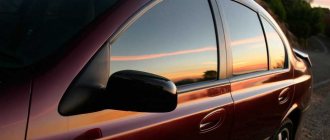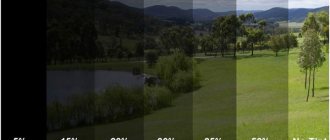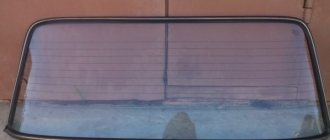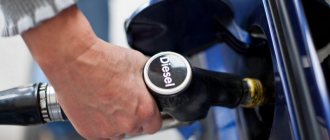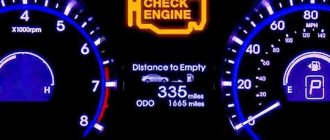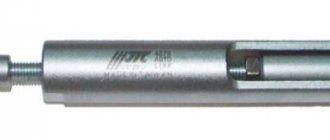Tinting car windows protects the driver and everyone in the cabin from the sun's rays. It also prevents fading of seat upholstery and other interior components. Serves as a thermal insulation shell.
In 2016, clear rules and standards were introduced that regulate the rules of tinting; in the article we describe the requirements for tinting in order to protect you from paying fines for violating the rules of tinting. We will also show you what 75%, 50% or 5% tint looks like on a car.
GOST and tolerances for car tinting
The norms and rules for tinting car windows can be found in the appendix to the traffic rules “List of faults and conditions under which the operation of the vehicle is prohibited.” It describes the rules for using tinted glass according to regulatory documents such as GOST 5727-88.
Tinting refers to the level of light transmittance as a percentage - the higher it is, the more transparent the glass or film and the greater the tinting value.
- According to the State Standard, there is a requirement for the light transmittance of the front glass. It must transmit at least 75% of sunlight .
- For front-side glass, the rules are less stringent - they must transmit 70% of light or more .
- Rear, posterolateral windows have no restrictions in terms of their darkening. This rule applies provided that rear-view mirrors are installed on both sides of the car so that the entire road behind the car can be seen through them.
- It is allowed to use sun protection stickers on the transparent front part of the car. However, they have restrictions on width - no more than 14 mm.
- There is a ban on the use of mirror film, since the reflection of rays from it can blind other road users.
- It is not allowed to place a “blind” film that darkens the glass by 100%; there is a ban according to the regulatory documents of the State Standard.
- Chameleon-type film, which changes the level of transparency under different lighting conditions, is not subject to prohibitions. Its light transmittance reaches 80% at maximum.
The penalty for violating light transmittance standards is a fine . Its size is fixed. Until recently it was 500 rubles. In 2022, its value rose to 1,500 rubles.
Procedure for recording a violation
To record a violation, a simple inspection of the car by a traffic police officer is not enough. The level of light transmittance must be measured using a special device. The procedure is only allowed on the territory of a stationary post.
During the inspection, the driver has the following rights:
- Make sure that there is a mark and seal on the measuring device;
- Study the documents for the device;
- Make sure there is no damage;
- Require recording of indicators in the presence of witnesses.
Upon inspection of the vehicle and a violation is recorded, a protocol is drawn up. The date is indicated here, as well as the exact time the violation was detected.
This is necessary for timing. You can repeat the inspection, which ends with a fine, after 24 hours.
Car tinting options in numbers
Toning has its own gradations based on the percentage of shading.
Toning gradations, %:
- 5% — visibility is completely absent;
- 10% — the outlines of objects in the cabin are visible;
- 15% — Silhouettes are clearly visible;
- 20% — the faces of passengers and the driver are visible;
- 35% — Objects and silhouettes are clearly visible;
- 50% — everything is visible in a darkened space;
- 60% — Everything is visible in a slightly darkened form;
- 70% and above - everything is visible.
There are other toning numbers, they are closer to those presented in the table. The percentage values of tinting correspond to the light transmission capabilities. The colored pigment contained in the material can give different shades to the film. This corresponds to the tint numbers :
- N 150 is a gray, athermal film that protects against overheating.
- N 140 - yellow, athermal, protection against fading of interior materials.
- N 121 – white, creates an attractive appearance.
- N 001 – green, light protection effect, retro look.
- N 005 – blue creates darkness and at the same time the impression of transparent windows.
- N 023 – blue, like blue, decorates the window and at the same time darkens it.
- N 133 – brown does not reflect sunlight.
- N 056 – two-color, creates a contrast effect.
- N 167 – to match the color of the car, this film has design significance and creates a decorative effect.
- N 125 is a film that does not darken glass, designed to protect against thermal radiation and create safety.
What does 75% tint look like - the lightest
GOST regulatory documents prescribe the possibility of using 75 percent tinting. This film is intended for gluing or applying to the windshield and front side windows . This is the lightest tint. It provides good visibility in the dark or when weather conditions worsen, fog or rain appear. When the weather is sunny, driving is comfortable, without problems with vision.
Athermal coating with a rainbow effect is acceptable, but provided that it does not distract the driver’s attention, does not create optical distortions, and does not interfere with a good view of the road ahead. For the front side windows, a tint of 70% or higher is possible.
What it is?
Tinting is considered the most famous and affordable way to decorate a car. This is an integral element of styling. Look how impressive the car looks in chameleon tint.
The quality of materials and variety of film choices is far ahead of what has been on the market in the last decade. Even inexpensive coatings made in the Middle Kingdom, glued in one layer, will last about 2 seasons if there is no external damage. Multilayer tint film, sold in rolls, is now considered to be of particularly high quality. The choice of suitable film depends on the budget and capabilities of the car owner. In this case, you will have to tinker with the tinting of the side windows, and the work itself requires care. But the result will definitely please the owner.
Tinting 50%
It is characterized by the fact that the interior creates a feeling of soft light that does not irritate, but soothes the eyes. The interior and passengers are visible from the outside. At the same time, visibility from the inside is somewhat impaired, so fifty percent film is not allowed for covering the front windshield. It can distort the view and prevent the driver from seeing obstacles on the road or nearby traffic.
Athermal tint films
This coating is different in that the glass remains completely transparent, but the protective layer on it is very powerful. There are a lot of practical benefits from gluing such a film. Athermal tinting blocks ultraviolet radiation and protects interior parts from fading and overheating. It does not affect visibility in any way. There are also no problems with DPS. At the same time, the coating is dense and multi-layered. The film can protect glass from various mechanical damages.
If the looks of strangers into the car interior do not frighten you, then this is a good choice for any car.
Car tinting 20%
The darkening is significant. When looking at the car windows, silhouettes are visible, the faces of people sitting in the car are hard to see. This type of film can be placed on the windows of the rear hemisphere . In the evening and at night, darkness of this level creates discomfort when driving; you may not see obstacles or objects near the car. Road traffic accidents are possible. For optimal control of the car, rear-view mirrors are required on both sides of the body - it is impossible to see what is happening through the rear window.
What does the darkest tint look like - 15 - 5%
Tinting 5-15% reduces the light transmittance of glass by 80-90%. The interior is pleasantly dark, and almost nothing is visible from the outside. It’s good if objects and silhouettes are slightly visible. Such a film should absolutely not be placed on the windows of the front hemisphere, only on the rear glass and, possibly, on the rear side windows . When driving in cloudy weather or at night, the driver’s visibility becomes difficult and visual discomfort occurs. You can easily get into an emergency situation.
A mandatory requirement is side rear view mirrors to view the road situation behind the car.
Film application
How to glue tint. The surface of the side glass is wetted and the lower part of the glass is cleaned with a scraper. Next, the glass is lowered, wetted and cleaned. Then the entire surface is washed with a hard sponge and wiped with distillation. Each edge should be wiped dry with napkins.
Before gluing the tint, the glass is generously moistened with soapy water. Then two-thirds of the protective liner layer is removed from the film blank. The adhesive surface is also wetted with a soap solution. This operation will most conveniently be performed on the rear window of the car. It is better to immediately cut off the excess liner before gluing.
It is important to wash your hands thoroughly. Then the workpiece is carefully placed on the glass, leveled, and a soap solution is squeezed out from under it. That's it, the installation of the film can be considered complete. But it’s important to remember that it hasn’t completely stuck yet. Therefore, it is recommended not to lower the windows for at least a day after gluing the film.
Which window tinting is best for the city?
The best option for selecting a tint film is to follow GOST standards. In this case, the car, even when checked by the traffic police, will pass all measurements of blackouts. The driver will feel calm and confident.
- For the front hemisphere, the rule applies: the light transmittance of the front windows must be at least 75%. Athermal types of films fully meet this requirement. Their level of transparency usually reaches 75-90%. They can be confidently placed on the windshield. Polymer and nanoceramic layers of these materials provide reliable protection against ultraviolet and infrared radiation. They allow other types of rays to pass through freely. The choice of athermal films from manufacturers from different countries is quite wide. Recommended brands: Ultra Vision, ASWF, Armolan, etc.
- As for the coverage of the rear hemisphere of the car , there are no obstacles to the use of other options for tinting materials. The car owner can be guided by his tastes and common sense.
For the rear and side rear windows, it is worth tracking the visibility behind the car. It is ensured either by the transparency of the film placed on the rear window, or by the rear view mirrors placed on both sides of the car.
- At what level of dimming mirrors should be mounted - there are no such recommendations. The best option is to always have two side rear view mirrors on the car. This helps not only with tinted windows, but also with completely transparent glass.
Additional measures
Additionally, the traffic police officer may issue an order to eliminate violations. It must be completed within 10 days. Otherwise, additional liability is provided in the form of arrest for 15 days, a fine in the amount of 500-1000 rubles.
- Car window tinting is considered a harmless, common way to change the appearance of a vehicle.
- The intervention must be carried out wisely. Only in this case it will not cause fines and other liability.
Types of car tinting according to technical parameters
- Colored. They are colored with pigment. According to state standards, it is required that the driver’s perception of the primary colors that are used to regulate traffic is not distorted. These colors are: red, yellow, green, blue, white. Distorting their perception is critical on the road. Films consist of several layers. Each of them affects the level of light transmission and the strength of the material.
- Metallized - they contain the thinnest layer of metal, most often aluminum. It perfectly repels light flux and protects against ultraviolet radiation. Protective and tinting layers are interspersed with a layer of metallized coating. Used for internal gluing and external tinting.
- "Infinity" . In the production of such a film, metal spraying is used, which improves the physical properties of the material. The high quality of the layer application avoids distortion of the driver’s visual perception.
- Combined , gradient, darken and protect from ultraviolet radiation. The combination of metallized and colored coatings is achieved using a gradient layering method. The top part has a metal coating, the bottom remains the same coating. From the outside it appears as a shading transition from the dark top half of the glass to the light transparent bottom layer.
- Spatter - multi-layered with metal application. The production method is based on the introduction of metal components into the structure of the material. They belong to the category of athermal, since they effectively reduce solar activity. They protect against heat in hot weather and hypothermia in frost. They are characterized by increased wear resistance.
- Athermal films , which delay the flow of heat through glass, protect up to 90% of the temperature of the sun's rays. Such a film can be transparent; it can be placed on the front and front side windows of a car without any problems. Made with a large number of layers. Each of them is aimed at blocking its own spectrum of rays: ultraviolet and infrared. Thanks to this, a good level of protection is achieved from the hot sun, and in cold times - from the penetration of cold air.
- Spatter-metallized . A combination of 3 types: spatter, metallized, colored. The metal is present both in the structure of the material and is contained in the intermediate layer between other options.
- Chameleon. They shimmer in different colors under the rays of the sun. From purple to different shades of blue, cyan, and other colors. They protect the driver and passengers from sun glare and heating inside the cabin, that is, they have athermal properties. Light transmission characteristics are less pronounced than other types.
- Anti-vandal. They have glass strengthening properties in addition to UV protection. When hit by a hard object, the glass does not scatter throughout the cabin; the fragments collect on the film coating.
- Carbon. Films made from a new generation of modern material with improved physical and mechanical characteristics. The technology of spraying graphite in a vacuum was used. They are characterized by increased wear resistance. They don't burn out. No glare. Can be used not only for car windows, but to protect the body.
Making a pattern
To do this, you need to understand where the adhesive layer is on the film. This is easy to do - it will be protected with transparent film. It is better to make the pattern along the roll. You should constantly ensure that the cut piece is several centimeters larger than the glass.
The glass needs to be moistened and the film placed on it as a protective layer. The lower part must be strictly parallel to the horizontal seal. It should also extend into the seal by at least one centimeter. Then, using a knife and forcing, cuts are made in the film so that the pattern can be placed one centimeter over the surface of the seal. Next, the film is fixed on wet glass and a pattern is made.
How to choose tinting for urban conditions
- Pay attention to multi-layering. The more layers of coating, the stronger and more durable it is. In this case, the visibility parameter is taken into account.
- Light transmittance, that is, the percentage level of darkness. This parameter is described in the previous sections on gradations: from almost transparent to the darkest, beyond which the silhouettes are barely distinguishable.
- Protective properties against temperature effects. Athermal films occupy a special place in this indicator.
- Coating color . This already relates to the area of taste. It is the owner who decides whether to decorate the windows to match the color of the car, in contrast, or in accordance with a certain style - retro, metallic, hi-tech or other. The main thing is that the tinting does not produce glare or distort colors. so that everything can be clearly seen through it.
All these methods of forming tinted coatings make it possible to obtain different percentages of light transmission from films - 70-75%, close to transparent, to the darkest - 5-15%. Car window tinting creates a pleasant variety in the appearance of the car. At the same time, this is a good protective option for increasing safety when driving a car, as well as creating comfort for the driver and passengers.
Attention to the errors of indicators
When choosing a film, it is important to take into account errors that are inevitable. It is better to opt for a lighter option than to become the owner of a fine.
You must understand that the light transmittance even in a new car will not be ideal. There will always be a deviation from 100%.
In used cars, the error in the indicator can reach up to 10% of the ideal. Therefore, when choosing a film to meet the 70% indicator, it is better to choose not the 30% option, but a copy of no more than 20%.

